

The original 100-megapixel Fujifilm GFX 100 medium-format digital camera was released in 2019. We awarded it 4.5 stars / Highly recommended and commented “The GFX 100’s massive 102 megapixel resolution is undoubtedly the one feature that gets everyone’s attention, but it’s the other major improvements that have been made that really make it a step forward for both Fujifilm and medium format cameras in general.”
Fast forward 4 years and Fujifilm have released its successor, the GFX 100 II. What exactly has changed and which model should you buy?
We’re bringing you this in-depth Fujifilm GFX 100 II vs Fujifilm GFX 100 head-to-head comparison to help you choose between these two medium-format mirrorless cameras.
You can also read our detailed Fujifilm GFX 100 II review and Fujifilm GFX 100 review to find out exactly what we think of each model.
Sensor
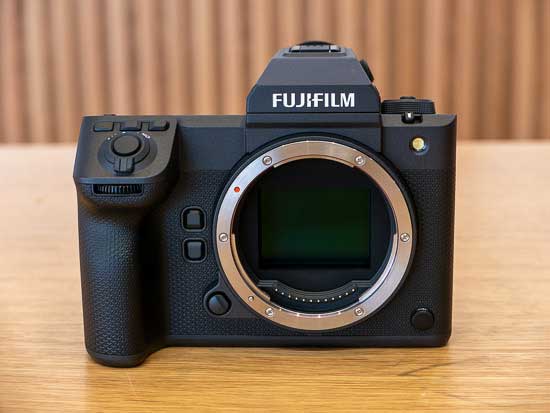
At the heart of the Fujifilm GFX 100 II is a completely new 102 megapixel high-speed image sensor called the “GFX 102MP CMOS II HS”.
Along with a new processor, the new sensor delivers up to double the signal readout speed compared to the GFX 100, which in turn provides significant performance improvements in continuous shooting, auto-focusing and video recording.
Processor
The GFX 100II uses the very latest X-Processor 5, which provides many features including HEIF, AI, 4:2:2 10-bit and 12-bit ProRes video.
The GFX 100 uses the previous-generation X-Processor 4 processor.
Pixel Shift Multi-shot
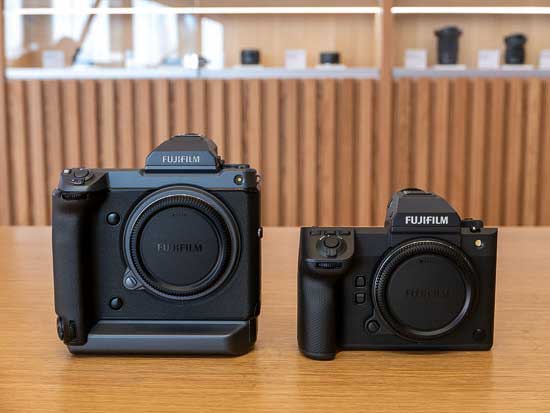
Both cameras feature the special Pixel Shift Multi-Shot mode, which delivers massive 400 megapixel images for the ultimate quality when detail really matters.
In the Pixel Shift Multi-Shot mode the camera records 16 frames, using the IBIS unit to shift the sensor by 1 pixel between each frame.
The resulting images can be manually combined into one DNG RAW file using Fujifilm’s Pixel Shift Combiner software which automatically combines them into a single DNG file.
The new GFX 100II additionally offers a 4 image Pixel Shift Multi-shot mode for easier archiving, which creates much smaller files than the standard mode.
ISO Speed
The native ISO range on the GFX-100 is 100-12,800, which can be expanded to ISO 50-102,400.
The GFX 100II has a new ISO 80 base value (ISO 100 for movies), which Fujifilm claims offers 30% more dynamic range and lower noise than the base ISO 100 value on the GFX 100. It can be expanded to ISO 40-102,400.
Video
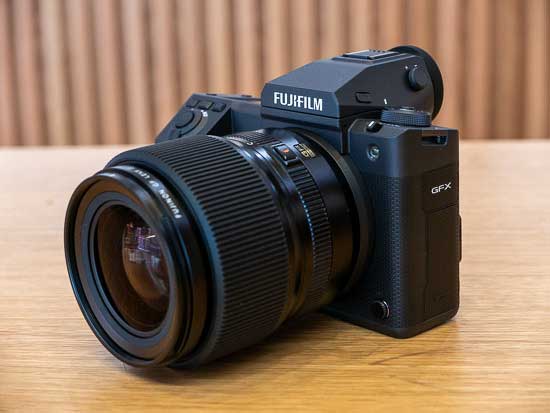
The GFX 100 II is the most capable medium-format camera for video ever released, offering 8K/30p, 4K/60p/30p, FHD 120p and
Apple ProRes support.
The key video modes are:
- 8K/30p, 31ms rolling shutter, 1.51x crop
- 8K/24p, 30ms, 1,42x crop
- 4K/60p at 15ms, no crop
- FHD 120fps, 7ms, no crop
All of these modes can be recorded at 4:2:2 10-bit video internally.
There is
90 min battery life for 4K, 80min for 8K, and at
40 degrees it can operate for 38min without the optional fan accessory or 64min with for 4K, and 26/50min for 8K.
The F-log2 profile offers 13+ stops of dynamic range in any mode and over 14+ stops in dynamic range priority mode (only supports up to 4K/30p and 25ms rolling shutter).
There is
IDT support, which is a cinema standard extended colour space, and it also supports GF, Premista, 35mm and 35mm Anamorphic lenses, over 1000 in total, with the mount adapter.
AF tracking for movies as well as stills is also available for the very first time on the GFX system using the AF-C + Wide / Tracking AF mode.
Combined with a compatible ATOMOS HDMI device, RAW video output from GFX100 II can be recorded as 12-bit Apple ProRes RAW at resolutions up to 8K and frame rates up to 29.97fps.
With Blackmagic Design Video Assist 12G HDRs, RAW video output from the camera can be recorded as Blackmagic RAW at resolutions up to 8K and frame rates up to 29.97fps.
The GFX 100 only offered up to DCI 4K quality at 29.97, 25, 24, and 23.98 fps at up to 400Mbps and Full HD up to 60fps in either the H.265 or H.264 formats, and 4:2.2 10bit was only available when recording out via the HDMI port, with 4:2.0 10bit going to the SD cards.
Autofocus
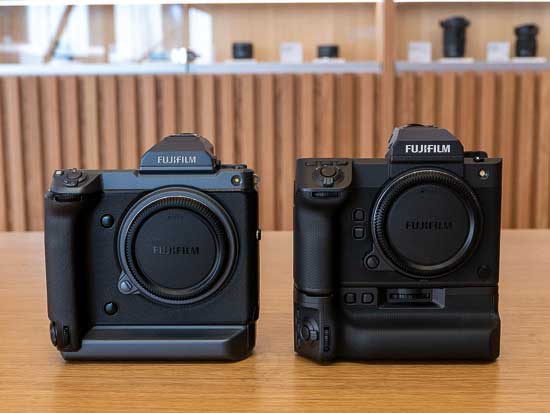
The Fujifilm GFX 100 has a dual phase-detection and contrast-detection type autofocus system, thanks to the 3.76 million phase-detection AF pixels that are embedded in the sensor. It uses the same AF algorithm adopted from the fourth generation X Series cameras (X-T3 and X-T30).
The new GFX 100 II bring the AI-based subject-detection AF developed with Deep Learning technology as well as the latest prediction AF algorithm developed with the X-H2S to the GFX Series for the first time.
It can now detect animals, birds, cars, motorcycles, bicycles, airplanes, trains, insects and drones, just like the very latest X-series cameras.
Burst Shooting
The GFX 100 II offers amazing continuous shooting speeds for a medium-format camera, putting some 35mm full-frame models to shame.
It supports 8fps bursts using the mechanical shutter for both CFExpress and SD memory cards, with a buffer of 1000K+ JPEGs, 325 Raw Comp, 75 Raw + JPEG.
The original GFX 100 is slower and has a much smaller buffer, offering a continuous shooting rate of 5fps for just 41 JPEGs or 14 compressed Raw files if you use a UHS-II SDXC card and the mechanical shutter.
Body and Design
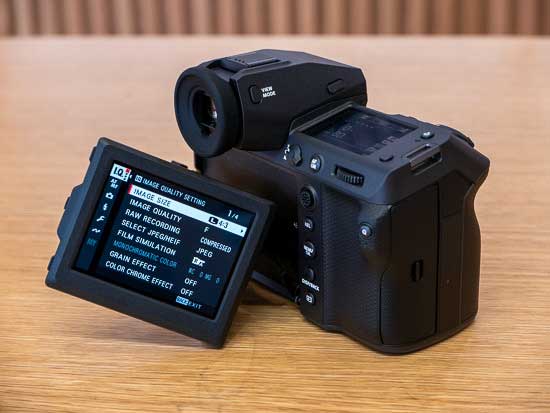
The new GFX 100 II is much more similar in appearance to the GFX 100S camera than to the GFX 100 that it actually replaces, just with a more square, angular, rugged design.
The sub-LCD screen on the top is bigger at 2.09-inch and there is a new row of three unmarked Function buttons just behind the shutter button. Otherwise it’s difficult to tell the GFX 100II and the GFX 100S apart visually when they’re side-by-side.
That means that owners of the GFX 100, with its integrated grip and lots of unmarked buttons, will need to take some time to get familiar with the layout of the GFX100II.
Fujifilm have also employed a new BISHAMON-TEXTM texture is used to maximize the camera’s grip when hand-held in various angles.
The GFX 100 II has all the ports that you could ever need, including a headphone jack, MIC / remote release port, Ethernet port, USB-C port and a full-size HDMI Type A port.
IBIS
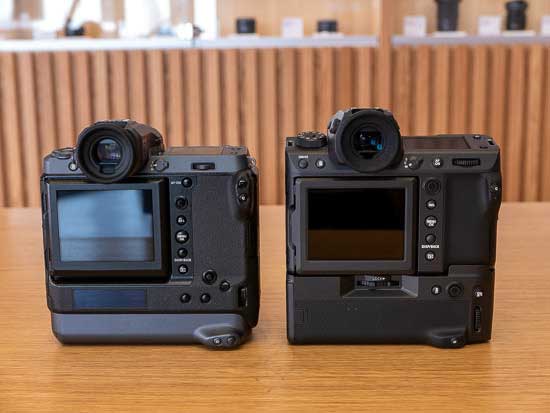
The GFX 100 II offers up to a very impressive 8-stops of IBIS (when using either the 63mm lens, 80mm or 110mm lenses), which is currently the best performance of any Fujifilm camera regardless of sensor size.
The GFX 100 was the first ever GFX and first ever medium format camera to feature in-body image stabilization, providing up to 5.5 stops of image stabilization when using the GF 63mm F2.8 R WR lens.
Viewfinder
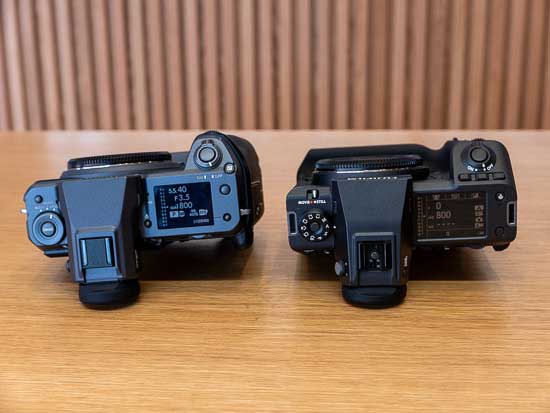
The Fuji GFX 100 has an impressive 5.76m-dot OLED electronic viewfinder which is 0.5 inch in size, offers 0.86x magnification and 100% scene coverage, and has an 85fps refresh rate.
The new GFX100II ups the ante considerably by featuring a 9.44m-dot OLED EVF with 120fps refresh rate and most impressively 1.0x magnification. Once you’ve looked through this EVF, you won’t want to try another one ever again!
The electronic viewfinder on both models is removable, slotting into the flash hotshoe on top of the camera, improving system modularity and enabling the camera to shed some weight if necessary.
LCD Screen
Both cameras have exactly the same LCD screen. It’s 3.2-inches in size and the resolution is 2.36m-dots, exactly the same as the screen on the GFX 50S.
It has a three-way tilting design, so it can be tilted up and down by about 90 degrees when in landscape mode and also upward when shooting in portrait mode via a simple press of a button on the side.
Memory Cards
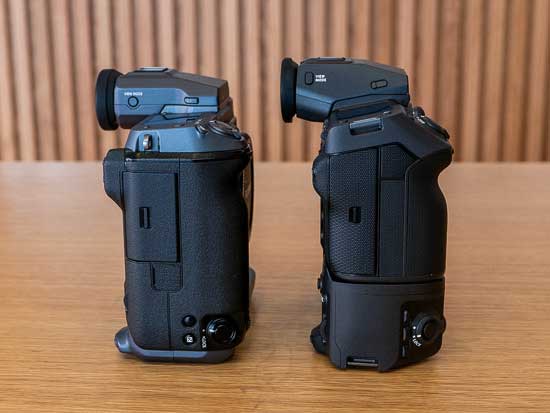
The GFX 100 has dual UHS-II SD memory card slots located on the right-hand flank of the camera when viewed from the rear.
The Mark II version has one UHS-II SD slot and one CFexpress Type B slot, as also seen on the recent X-H2S and X-H2 X-series cameras. You need to use use a CFexpress Type B card with a fast write speed to take full advantage of all the different video modes that are available.
Battery Grip
There is an optional battery grip available for the GFX 100 II, rather than having an integrated one as on the original GFX 100 model.
The Fujifilm GFX 100 has a built-in vertical grip, complete with an extra set of controls for use in the portrait orientation. This grip is an integral part of the camera that cannot be removed, especially considering that it houses the two batteries that power the camera in a slide-out tray.
The GFX 100 II is compatible with the VG-GFX II optional accessory, which also has an extra set of key controls for horizontal use and also holds two extra batteries, supporting a maximum of three in total when you also count the one in the camera.
Battery Life

The GFX 100 II uses exactly the same NP-W235 batteries as the X-T5, X-H2 etc, with Fujifilm claiming that it offers 540 shot life, so around 20% longer per battery than the GFX 100, and around 1620 shots if you use the optional grip and install all three batteries.
This is because the older GFX 100 uses smaller-capacity NP-T125 batteries which only provide 400-shot battery life each, so 800 shots in total.
Both cameras can also be powered and charged via a USB-C connection, which is useful if you’re out and about and have a compatible power-bank to plug the camera into.
New to the GFX 100 II is the ability to connect external SSD drive via the USB-C port and then record stills and videos directly to the SSD drive in any mode or format, including 4K/60P and 8K/30P.
Film Simulations
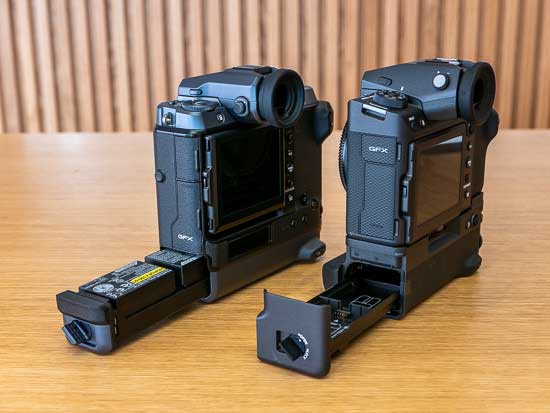
For the first time on any Fujifilm camera, there’s a brand new film simulation called Reala Ace. This is a negative film simulation that’s similar to Provia, but is slightly less saturated and contrasty.
The new Reala Ace brings the total of film simulations available on the GFX 100 II to 20.
Price
The new Fujifilm GFX 100 II is priced at £6999 / €7999 / $7499 body-only in the UK, Europe and USA respectively.
The recommended retail price of the Fujifilm GFX 100 was £9999 / $9999 body only in the UK and USA respectively when it was first released in 2019. It has now been officially discontinued.
Conclusion
The new GFX 100 II is Fujifilm’s third-generation 100 megapixel medium-format camera, and it certainly shows, as an awful lot has changed in the 6 years since the GFX 100 was initially unveiled. So much so that the two cameras are worlds apart in terms of their specification and performance, with the newer model following the styling of the GFX 100S much more closely than its direct predecessor.
So what do you think? Would you choose the new GFX 100 II or the now aging but still capable GFX 100? Leave a comment below!






